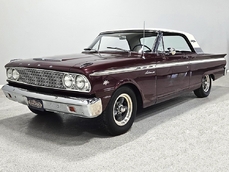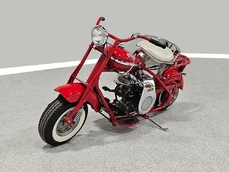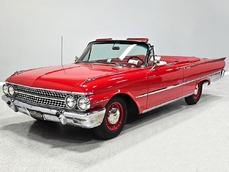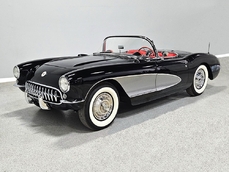Auburn 8-100 268 cubic inch straight-8 1929
General description :
The term “boat-tail speedster” is indelibly linked to Auburn automobiles. Although other manufacturers and coachworks built speedsters with pointed tails, none conjure the rakishness and speed that the Auburn does. There’s an argument to be made that the Auburn was America’s first purpose-built performance car, and the marque was certainly well-regarded as a manufacturer of fast, competent automobiles in the early 1930s. It wasn’t always that way, however, and the 1929 Auburn Speedster seen here is part of E.L. Cord’s attempts to put formerly staid and conservative Auburn into the minds of the motoring public. With bright colors, often in two-tone combinations, plus the sleek, low-slung Speedsters in dealerships, the reborn Auburn seemed to be hitting on all eight cylinders. And while Auburn did not survive the Great Depression, the legend of the boat-tail Auburns continues to this day.
Seeing an Auburn Speedster today is an event, but can you imagine the impact a car like this would have had in 1929? It would have been like a spaceship landing in Central Park! We don’t know this Speedster’s early history, but we do know that the body was re-created during restoration. The restorer used a second Speedster body as a prototype and duplicated every piece of wood, every joint, every curve, and every detail so as to make the new body indistinguishable from an original. Granted, that’s not quite the same as an original, but then again, this car is 30% less expensive than one carrying its original body. Regardless, the restoration is quite nicely done and was completed in the early 2000s. The subtle colors look dramatic together and on the swoopy sheetmetal, highlighting the car’s most famous styling detail. This was more than a roadster with a different tail, as the Speedsters sit two inches lower and you’ll note the many unique details, ranging from the doors that echo the angle of the windshield and “prow” of the rear deck (note the door handles also hang at the same angle—this is purely intentional) to the raised molding on the hood that makes the ideal place for the two-tone finish to separate. Up close you’ll spot a bright red pinstripe separating the two colors and finish quality remains excellent throughout. There are a few minor signs of use and age, most notably a thin spot on the chrome of the radiator shell, but this car nonetheless remains ready to drive and show with pride.
Woodlite headlights are a fantastically rare feature, and you will note this car includes a matching set of cowl lights, and they all remain fully operational and are likely worth thousands all by themselves. They give the Speedster a unique look that suits its dramatic bodywork. The lovely sidemount mirrors are exquisite little Art-Deco sculptures and all 1929 Speedsters were equipped with dual sidemounts and a running board-mounted spotlight. The deeply Vee’d and laid-back windshield would be called a “DuVall” windshield after the war, and it is a big part of the Speedster’s high-speed look. Correct windshield wiper motors are mounted externally and the running boards have neat grilles instead of step plates, ostensibly designed to let the mud on your shoes fall through. The Speedster was obviously not intended to be a year-round vehicle, but there is a removable black canvas top for emergencies. Spring-loaded bumpers are both attractive and effective and there’s a single taillight out back that shows STOP when you hit the brake (no, it’s not a Model A taillight, sorry).
People were probably smaller in 1929, but once you’ve squeezed yourself through the doors, it’s actually fairly accommodating for anyone under six feet tall. The seat is low, so you sit with your legs straight out in front of you, but it isn’t difficult or awkward, and the controls are conventionally arranged. Beautiful tan leather wraps around virtually every surface inside and it remains in excellent condition save for some very light stretching on the lower seat cushion. The big steering wheel telegraphs the front wheels’ activities directly to your palms and steering effort is remarkably light. The gauges are standard Auburn, housed in a lovely nickel-plated frame, and they’re all fully operational save for the hydrostatic fuel gauge, which appears to be disconnected. Turn the key and pull the knob on the far right to trigger the starter, and the Auburn fires quickly and easily without any choke—in fact, it seems to hate the choke. Headlight, throttle, and spark controls are on the steering wheel hub along with the horn button, and the spotlight switch is under the dash. And that’s about it. No windows, no radio, no heater, not even any interior door handles, so it’s very much back to basics. Dark carpets anchor the interior and make keeping it clean easy and there’s a reasonably good-sized cargo bay behind the seat, making the Speedster an acceptable car for touring (as long as you know the weather will cooperate).
The 8-120 model designation refers to the engine, which is a Lycoming 268 cubic inch straight-8 rated at 120 horsepower. It isn’t terribly sophisticated, but with so little car to move around, performance is extremely entertaining—there couldn’t have been many quicker cars on the road in 1929. The engine bay is beautifully and correctly detailed, with corporate green engine enamel, a correct updraft carburetor, and the neatly finished distributor with aluminum “wings” to house the plug wires. The carburetor and fuel pump have been freshly rebuilt and the gas tank was just reconditioned, and it starts without the need for an electric assist pump. It barks to life with a fantastic 8-cylinder burble from the big tailpipe out back and idles smoothly at about 600 RPM, although there’s a bit of a hot-rod lope, so perhaps there’s an upgraded cam inside. It doesn’t get fussy, it stays nice and cool even sitting still on a warm day, and, well, it’s just not fussy at all. It does show some signs of use, mostly around the water pump, but that’s understandable—who wouldn’t want to take this car out and have some fun? It works so well, there’s just no reason not to put it on the road.
The only transmission available was a 3-speed manual, and in 1929, only Cadillac had Synchro-Mesh. However, if you get it just right, you’ll be able to click through the gears without double-clutching, and if you’re not quite up to it, a quick double-clutch makes for effortless gear changes no matter your skill level. Out back, we believe it has 4.10 gears, which are shockingly tall for such a light car, but they are also part of why it feels so potent and agile out on the road. It pulls from a crawl in top gear and races up to 55-60 MPH without any strain, easily keeping up with modern traffic. The suspension is primitive, with live axles and leaf springs at both ends, and you’ll note the dampers are attached by canvas straps, so they’re only there to manage the rebound. The brakes, however, are extremely effective thanks to hydraulic operation. Auburn was an early adopter of the new technology, surely inspired by the Duesenberg brothers’ engineering talent. It’ll lock up all four wheels without effort and pedal feel is so light you might assume it is power-assisted. Twin Optima batteries spin the starter vigorously and the exhaust system is wrapped up front to help control heat in the cockpit. There’s also a Bijur chassis lubrication system, although we have not tested it simply because they really make a mess. 18-inch chrome wire wheels add flash to a car that hardly needs more visual stimulation, and they’re fitted with unusual 6.00-6.50/18 whitewall tires that look very period-correct.
Today, as in 1929, the Auburn Speedster cuts a dramatic path through any venue it attends. But the fact that it remains such an easy car to drive and with very contemporary performance elevates it to something that should be properly enjoyed on the road. It will always be the hit of any show, but taking this car on tour is where it would truly shine. If you can acclimate yourself to the cockpit, you’ll be rewarded with a car that drives brilliantly and rewards its driver with fantastic road manners. If you’re a driving enthusiast rather than simply a car enthusiast, perhaps this Auburn is what you’ve been looking for. Call today!
http://www.harwoodmotors.com/vehicles/inventory_details.php?id=992
1929 Auburn 8-100 268 cubic inch straight-8 is listed sold on ClassicDigest in Macedonia by for $229900.
Car Facts
Car type : Car Make : Auburn Model : 8-100 Model Version : 268 cubic inch straight-8 Engine size : 0.0 Model Year : 1929 Sub type : Convertible Location : Ohio
Sold
Seller Information
Sold
Other cars listed for sale by this dealer
About Auburn
The Auburn Automobile Company was initially known as Eckhart Carriage Company, founded in Auburn, Indiana in 1874 , where they experimented making automobiles before actually entering the business.In 1926, Cord -then the owner of Auburn- after numerious and intricate ownership changes, partnered with Duesenberg Corporation. This was a collaboration to produce the fines automobiles in the American history.
Employing imaginative minds such as chief designer Alan Leamy, Cord built cars such as the Duesenberg Model J (1928-37), the Auburn Speedster (1935-37), the 851 Speedster, and the Cord 810/812 that became famous for their advanced engineering as well as their striking appearance. It was the first American-designed and built front wheel drive car with independent front suspension and hiding headlights.
The Depression, coupled with Cord's stock manipulations, finally killed the company in 1937.







